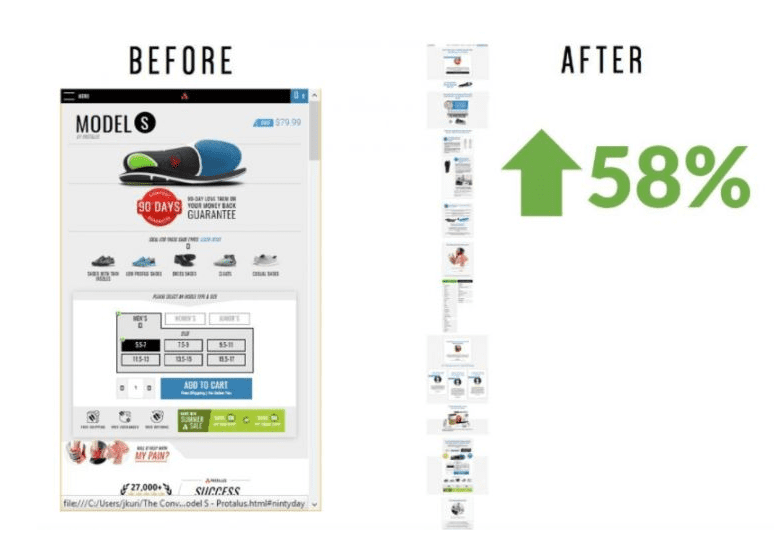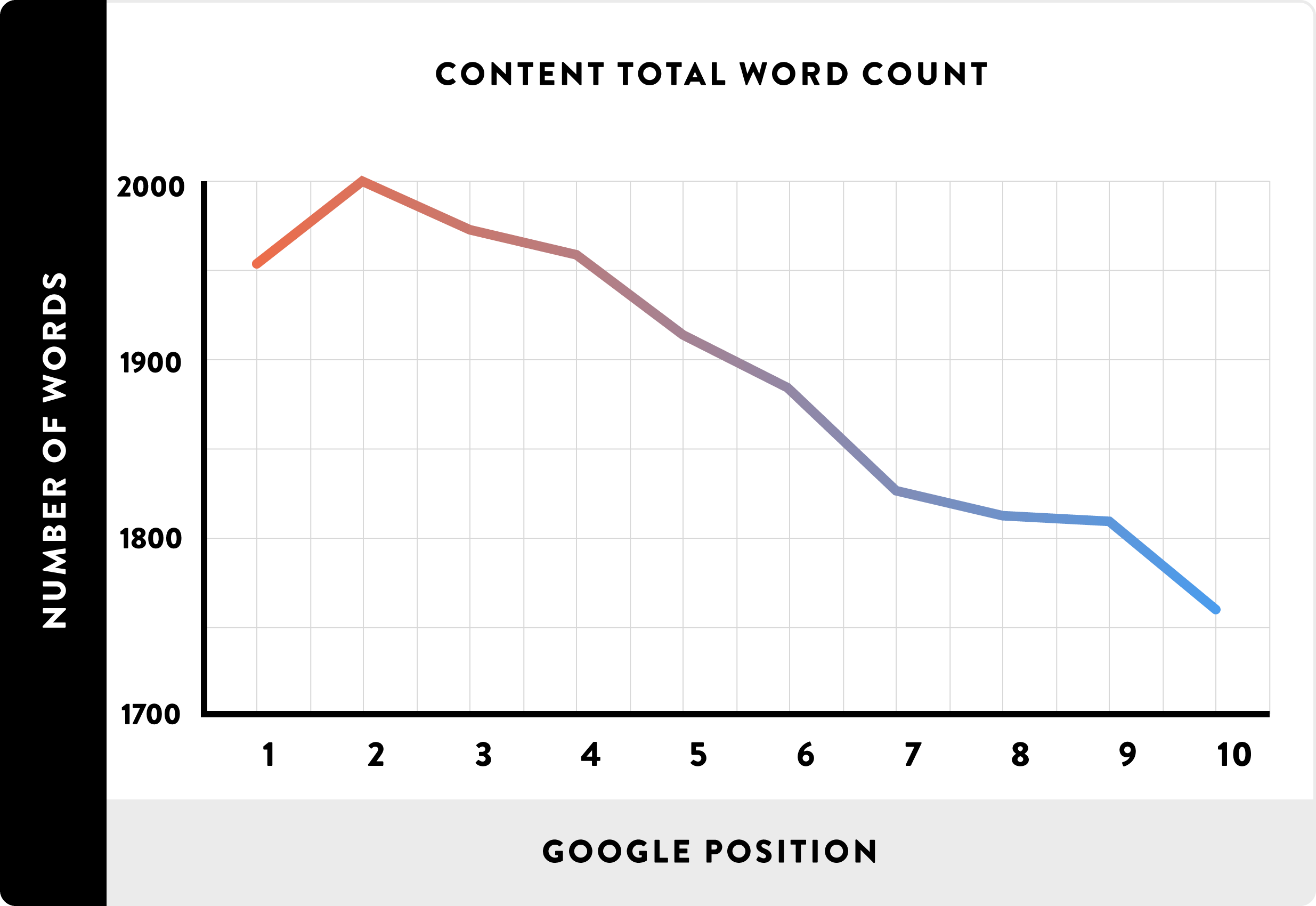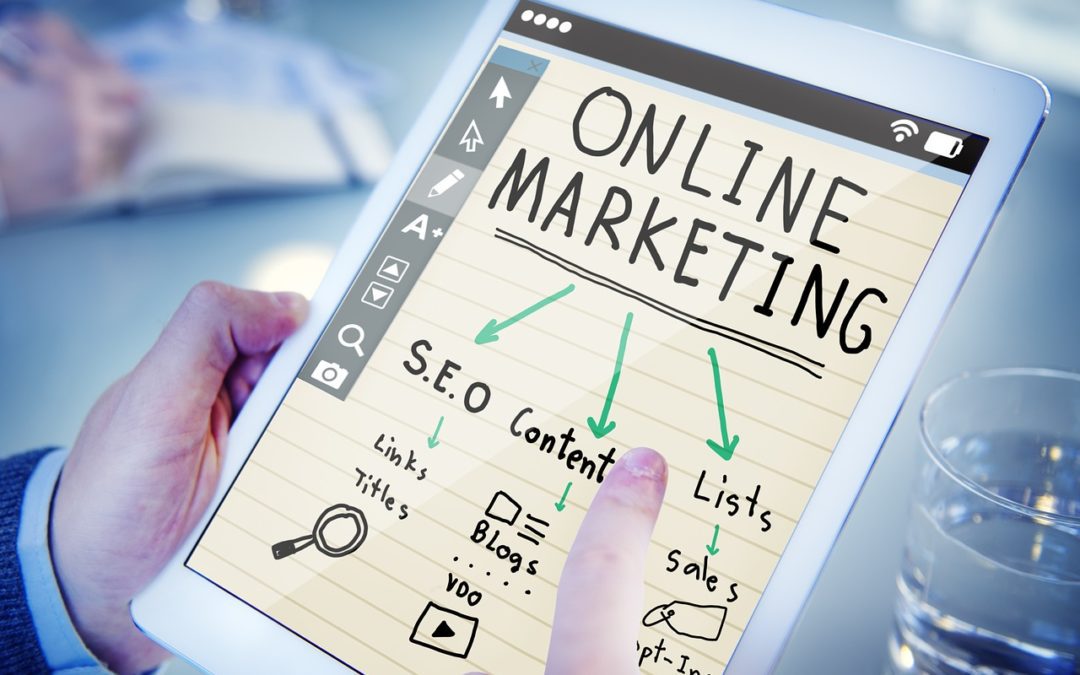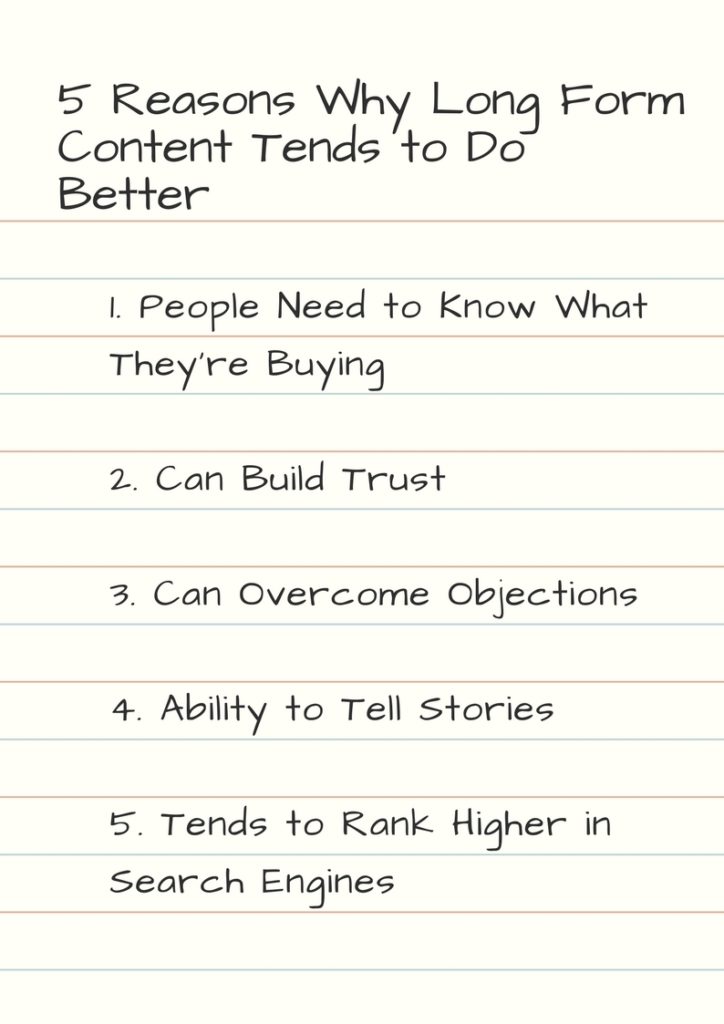Welcome to the second module in our course, Digital Marketing Strategies and Tactics to Grow Any Small Business.
Before we go any further in our course, Digital Marketing Strategies and Tactics to Grow Any Small Business, we’re going to have to dispel some common online marketing myths.
Why?
You’re likely to be resistant to the strategies I’m going to present in future modules because of the prevalence of myths that often persist in the name of common sense.
How do these myths come about?
There are at least 4 causes:
- Assumptions about who your website visitors are and where they come from is incorrect. This affects your strategy in how you build trust with your audience and how you can meet their needs.
- Assumptions about what’s important to your website visitors is incorrect. This affects the information you choose to provide to them.
- Assumptions about how your visitors travel through your website is incorrect. This affects your content hierarchy, menu items, call-to-action buttons, and the offers that you present on your website.
And finally,
4. Assumptions about how people consume content on the web is incorrect. This affects how you construct your sales message.
These assumptions are then perpetuated en masse until you begin to believe them.
Now, let’s bust through some marketing myths so we can help you grow your small business!
Myth #1 – No One Will Read All That
It is commonly asserted that because people don’t like to read, your website content should be short and to the point.
My caveat is that no one will read all that unless: (a) you are sharing information that people want to know, OR (b) you are trying to sell something and people need to know what they are buying.
The inverse would be if you’re not trying to sell anything or don’t have important information to share and you decide to create content about something anyways; then, yes, no one will read it. But if that’s the case, why are you putting it online?
The problem with this myth is related to incorrect assumption #2 and #4. Quite often people new to online marketing do not distinguish the differences in the willingness of others to consume content for random social media updates, versus the amount of content needed to create a lead, versus the amount of content needed to make a sale.
Short and to the point is necessary for a facebook update, but does that mean it’s what’s necessary for creating leads for $5k products, or even selling a $50-100 product?
Let’s dive into 3 areas where more content generally performs better – sales, conversion rate optimization, and SEO.
Long Sales Pages Tend to Do Better
Contrary to popular opinion, copywriters, conversion rate optimization experts, and SEO experts agree that longer sales pages tend to do better.
Why?
That’s simple: People want to know what they are buying.
In the words of famous entrepreneur Neil Patel, co-founder or Crazy Egg and Kissmetrics:
“Conversion Rate Optimization is like dating. So, if I go up to a random person…and I say, ‘will you marry me right now…chances are she’d say no. Why would she say no? [asks for response from audience]…exactly, you don’t know them. That’s the way the internet works too. Why would you expect someone to just come to your website, and you say, “Hey, buy something for $1000” and expect them to say ‘okay, here’s my credit card’…but once you get to know someone, they are much more likely to say yes.” (from: Neil Patel’s Top Ten Rules for Success)
These are intelligent words from Neil put into common sense lingo. People are generally not going to buy from you if they don’t trust you. They don’t trust you if they don’t know you.
Similarly, they won’t trust your offer if they don’t know exactly what they are going to get.
King of Copywriting David Ogilvy puts in his two cents on why lots of information tends to do better on sales pages:
“Direct response advertisers know that short copy doesn’t sell. In split-run tests, long copy invariably outsells short copy. But I must warn you that if you want your long copy to be read, you had better write it well. In particular, your first paragraph should be a grabber…Long copy sells more than short copy, particularly when you are asking the reader to spend a lot of money. Only amateurs use short copy.”
Conversion Rate Experts throw their hat into the ring on this subject when they say:
“Marketers have been debating for a long time about how much copy to include. In general, write as much as it takes to communicate your entire sales message and to overcome all the likely objections. You are aiming to condense as many persuasive arguments and as much relevant information into as little text as possible. Conveying all of this information will usually require more words than most websites currently use.
Include all the information that customers could possibly require in order to make a purchase. (Note that it doesn’t all need to be on the main product page.) Make sure to address all the common objections that your customers bring up. Compile a chart of objections and counter-objections, and then rank them in order of importance.”
Source: https://conversion-rate-experts.com/cro-tips/
According to the Crazy Egg blog, conversion rate optimization studies have been performed on advertisements for years. Crazy Egg relays the findings:
“A second team of scientists found that readers of an industrial magazine were significantly more likely to read ads containing long, rather than short, copy. The researchers “found that short copy is less effective in arousing the interest of readers. The results suggest that longer ad copy is needed to communicate the type of information sought by industrial prospects, empirically confirming beliefs held by the advertising industry.”
Source: https://www.crazyegg.com/blog/high-performing-landing-pages/
Free Trials Achieves the Same or Better Effect than Long Sales Pages
Now, this doesn’t necessarily prove that a longer page with more written content always wins. Just having length doesn’t mean you’ve provided the most relevant information. In fact, buyers can get to know you and your product/service through other means, such as with a free trial. Neil Patel is also famous for “reversing the sales funnel.” That is, he allows users to try the product before they buy it, either through a free trial or freemium version of his software. This takes away much of the risk of the unknown on the part of the buyer. Instead of having to take a leap of faith and make an educated guess about whether or not a product will work for them, they are able to test-drive the product. This seems to be more effective than having a long sales page.
Conversion Rate Experts also comments on this technique when they write:
“In general, do whatever you can to get the product into the customer’s hands. If you’re so confident in your product, prove it by taking some of the risk.”
Source: https://conversion-rate-experts.com/cro-tips/
What to Do When You Can’t Offer a Free Trial
But, not all industries can employ the “try before you buy” approach. This works particularly well in the SAAS industry; it also works in car sales. But it doesn’t work that well when you can’t physically examine the product and can’t use a free trial. If that is the case you’re going to need a convincing argument about the superiority of your product, and in most cases it is going to take some length to say it.
Barry A. Densa, from Melissa Global Intelligence, sums it up when he writes:
“You simply cannot provide all the information—a compelling story, incontrovertible proof, undeniable credibility, risk reversal, and an irresistible offer—all of which is necessary to convince, persuade and close a difficult sale—in… Click To Tweet
Source: https://www.melissadata.com/enews/marketingadvisor/articles/0910c/1.htm
An Important Case Study Where Long Form Content Won
This screenshot below shows the sales improvement achieved by Protalus, maker of an over-the-counter corrective insole, by moving to a longer sales page:

They comment on their rationale for moving to a longer sales page:
“On a landing page, you must overcorrect because you lack the back- and-forth conversation in a live selling situation. Below is the list of key elements on the winning page.”
They go on to state the key elements to their sales page which basically amounted to answering customer objections, including (1) Price too high, (2) Not sure it will work, (3) Not sure it will work for my specific condition, (4) Difficulty navigating the website.
The conversion optimization company then added sections specifically addressing each objection. The result was a page 5 or 6 times as long as the original. This increase in sales page length increased sales by 91% in 6 months.
Source: https://moz.com/blog/cro-case-study
The Protalus case study highlights a belief commonly held by pro copywriters. In a live sales situation, you can answer your customer’s questions at that moment. But on a sales page on the web you don’t know which questions or objections your visitor will have…so you need to answer all of them. This overcompensation often means you may arrive at a significantly long sales page.
Sales Page Length and Conversion Rates For Different Types of Offers
We’ve already covered how a longer sales page isn’t an absolute necessity because there are ways of communicating your message, overcoming objections, and demonstrating the value of your product/service through other means. But does this mean that long copy always wins where free trials or video are unbecoming? Bob Kemper, Director of Sciences at MECLABS and an authority on analyzing long versus short copy, relayed his findings on hundreds of A/B tests comparing short to long copy.
He found that (a) inexpensive purchases generally required shorter sales copy, (b) short copy generally performed better with products that were purchased due to emotional, impulsive, or want-oriented buying behavior, (c) if you’ve already established good brand identity and trust with your prospective buyer, not as much information is required because they already know and trust you.
Source: https://www.crazyegg.com/blog/high-performing-landing-pages/
Lead Vs Sale?
One final issue is the difference between asking for a sale and asking for a lead. Are you asking for payment right then and there on a website page, or are you just looking to get someone’s contact information? Regarding this distinction, Bob Kemper concludes:
“If you’re asking for $$$, people need way more information to make a decision and hence a long form page might be a more suitable option. In the end, it depends on the goal of your home page….long copy is the better performer when there is a rational, analytical, need-oriented motivation. Think consumer insurance products or many complex B2B offerings.”
Source: https://conversionxl.com/4-cases-where-short-home-pages-outperformed-long-home-pages/
What Kemper is saying here is that if you are asking for a visitor to make a purchase on the spot, you’re likely going to need longer content. If all you are asking for is a lead, such as someone picking up the phone, emailing you, or completing a contact form submission, you won’t necessarily have to counter every objection or answer every question, because you can do that down the road once your prospect begins to have more interactions with you.
What this all amounts to is the avoidance of making your website visitors and potential customers do all the heavy lifting. Give them some information about you, build some trust; don’t make them knock down your door to figure out who you are, what you offer, and what makes your business special.
Long Form Content Tends to do Better In SEO
In a landmark study of top search engine results, Brian Dean of Backlinko, in conjunction with Ahrefs, SEMRush, Market Muse, SimilarWeb and Clickstream, found that the top search engine results were, on the average, occupied with pages of about 2000 words of content. Here is a quick graphic that illustrates their findings.

As you can see, after about position #2, as word count decreases, rankings tend to decrease as well. This isn’t true for every type of content in SEO, but it is true for the majority.
Brian Dean comments:
“After removing outliers from our data (pages that contained fewer than 51 words and more than 9999 words), we discovered that pages with longer content ranked significantly better than short content. In fact, the average word count of a Google first page result is 1,890 words.
This correlation could be due to the fact that longer content generates significantly more social shares. Or it could be an inherent preference in Google for longer articles. Another theory is that longer content boosts your page’s topical relevancy, which gives Google a deeper understanding of your content’s topic.”
Source: https://backlinko.com/search-engine-ranking
This is why Dean, in his post on optimizing on-page SEO, gives the following pieces of advice to posting long content:
“The SEO adage “length is strength” was supported by our industry study which found that longer content tends to rank significantly higher on Google’s first page. Aim for at least 1900 words for every piece of content that you publish.”
When it comes to social media, people will likely not want to read 1000 word posts. But when it comes to web users who have informational or transactional intent, they will be willing to consume large amounts of content.
In the case of someone with informational intent (think blogs posts and SEO), their goal is to accumulate knowledge, so of course they are willing to “read all that.”
In the case of someone with transactional intent (think business and sales pages), they want to make sure they are making wise use of their money (except in the case of impulse purchases), so they also need a good amount of content to make an informed decision.
Text vs Video vs Audio
One question we should answer before we finish off this section is: “Do I always have to use a ton of text?”
The answer for SEO is “probably,” because search engines are much better at crawling text then they are at understanding videos and audio.
For sales, however, you could communicate your message through video, audio, infographics etc. It really depends on the type of product or service you offer and your production quality over the variety of mediums at your disposal.
Here are some alternatives to using long form text content:
Physical product – consider doing an unboxing video and show your product works in action.
Software as a Service – offer a free trial of your product or freemium version. Even better, offer a live demo of your product right on your site. Elegant Themes, for instance, is crushing their competition by offering a live demo [link] of their front-end page builder, Divi. This way, visitors don’t have to go through the trouble of downloading or signing up in order to test out the product. Why gate your product when people can try it immediately?
Service – Offer some free miniature version of your actual service. For instance, I am a web designer and digital marketer [link] and offer 3 different free services in order to build trust and clinch a sale. I offer:
- A free SEO-specific audit, where the user completes a form and their audit is delivered to them electronically. All of this happens automatically on my site and is initiated by the user.
- A hands-on website audit, so we can understand what’s wrong with your site and how to fix it. In this case I take 1-1.5 hours and look at everything from search engine rankings, to website speed, to conversion funnel.
- A discovery process that occurs before my proposal/estimate process, so I can understand what strategies to employ once I start a web design project and/or traffic and conversion campaign. This alone delivers a ton of value, helping prospects understand their competition, target audience, and available strategies and tactics.
So what happens if you buy into the myth that “no one will read all that?”
- No traffic. People won’t be able to find you online from search engines.
- No conversion. People won’t trust you enough to buy from you, won’t understand your offer, or won’t even bother contacting you.
Okay, myth #1 is sufficiently busted! If you read all the way to the end, then that pretty much proves my point. You read all that!
In the next article, we’ll move onto myth #2: Online Marketing = Social Media Marketing
But before we do move on, we need to answer how you are going put your long form content knowledge into use?
It’s difficult to give any advice that is “one size fits all.” If you’re just starting to get your small business online, here’s are some potential action steps you could take:
Homework:
- Begin writing down objections people have to buying your product or service, preferably during live selling situations.
- Add an FAQ page to your site, answering all the objections you hear.
- Add an About Page to your site. The About Page tends to be the 2nd most popular page on a site, on average. This will help build trust with your audience and add some personality to your brand.
Just making those 3 small changes would have a big impact on your conversions.
If you’re following this class on-line and keeping up with your coursework, here are your next steps:
If you haven’t already done so, sign up for Hubspot’s Inbound Marketing Course. You should have already watched “Inbound Marketing Fundamentals”
Watch “Planning a Long Term Content Strategy” and take the quiz at the end. Repeat the quiz until you score 100%
(Editorial Note: Since beginning creating this online course, Hubspot has restructured their inbound course offerings. We will be using the course “Inbound Marketing” primarily, but will also draw from the “Inbound” course.)
Additional Resources:
Brian Dean – We Analyzed 1 Million Google Search Results. Here’s What We Learned About SEO
Neil Patel – How to Share Your Brand’s Story on Your About Page



Share This
Share this post with your friends!